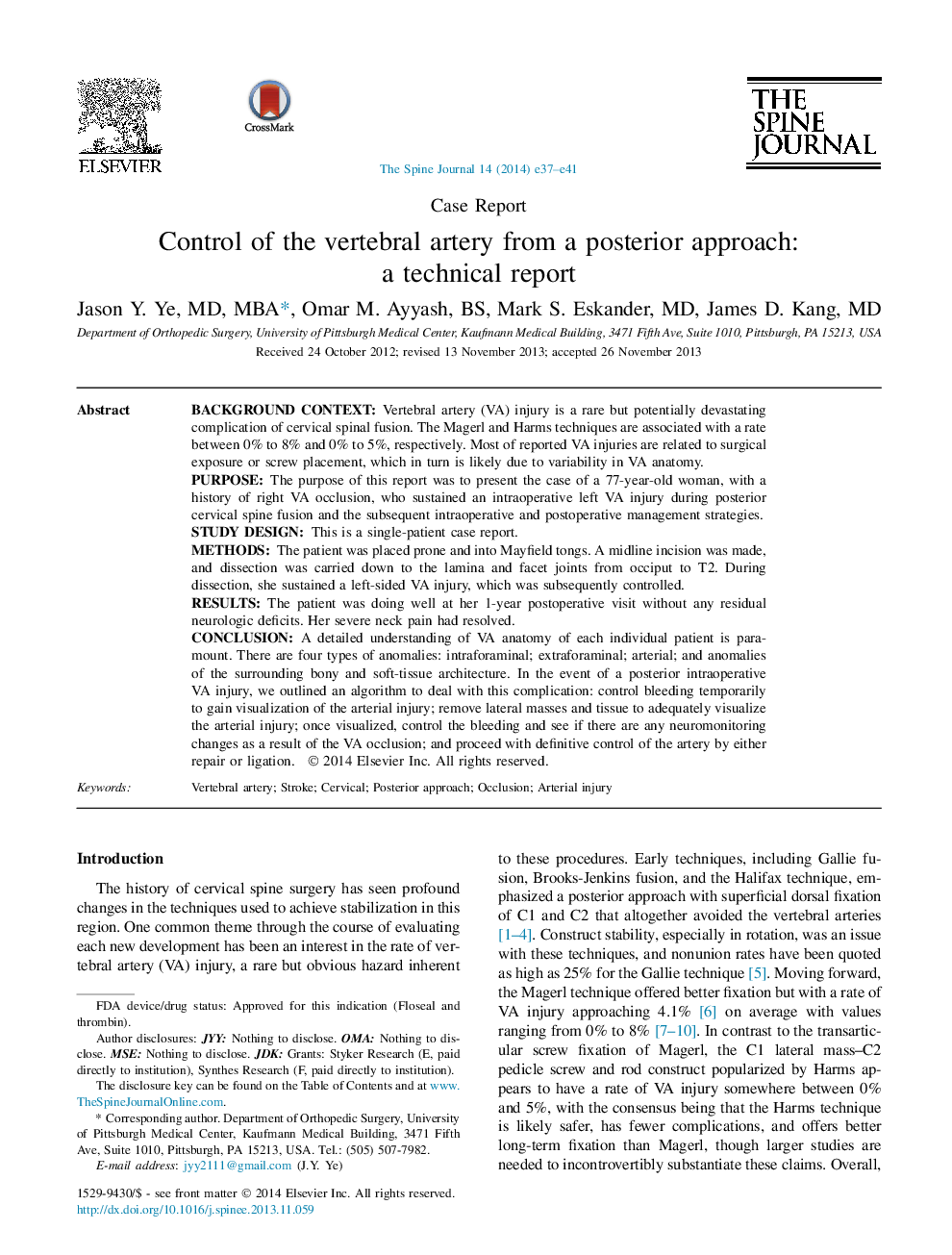| Article ID | Journal | Published Year | Pages | File Type |
|---|---|---|---|---|
| 4097819 | The Spine Journal | 2014 | 5 Pages |
Background contextVertebral artery (VA) injury is a rare but potentially devastating complication of cervical spinal fusion. The Magerl and Harms techniques are associated with a rate between 0% to 8% and 0% to 5%, respectively. Most of reported VA injuries are related to surgical exposure or screw placement, which in turn is likely due to variability in VA anatomy.PurposeThe purpose of this report was to present the case of a 77-year-old woman, with a history of right VA occlusion, who sustained an intraoperative left VA injury during posterior cervical spine fusion and the subsequent intraoperative and postoperative management strategies.Study designThis is a single-patient case report.MethodsThe patient was placed prone and into Mayfield tongs. A midline incision was made, and dissection was carried down to the lamina and facet joints from occiput to T2. During dissection, she sustained a left-sided VA injury, which was subsequently controlled.ResultsThe patient was doing well at her 1-year postoperative visit without any residual neurologic deficits. Her severe neck pain had resolved.ConclusionA detailed understanding of VA anatomy of each individual patient is paramount. There are four types of anomalies: intraforaminal; extraforaminal; arterial; and anomalies of the surrounding bony and soft-tissue architecture. In the event of a posterior intraoperative VA injury, we outlined an algorithm to deal with this complication: control bleeding temporarily to gain visualization of the arterial injury; remove lateral masses and tissue to adequately visualize the arterial injury; once visualized, control the bleeding and see if there are any neuromonitoring changes as a result of the VA occlusion; and proceed with definitive control of the artery by either repair or ligation.
